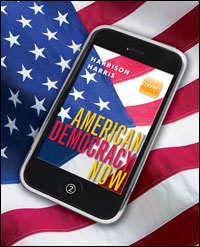| political party | an organization that recruits, nominates, and elects party members to office in order to control the government
|
 |
 |
 |
| platform | the formal statement of a party's principles and policy objectives
|
 |
 |
 |
| grassroots organizing | tasks that involve direct contact with voters or potential voters.
|
 |
 |
 |
| responsible party model | political scientists' view that a function of a party is to offer a clear choice to voters by establishing priorities or policy stances different from those of rival parties
|
 |
 |
 |
| party in the electorate | individuals who identify with or tend to support a party
|
 |
 |
 |
| party identifiers | individuals who identify themselves as a member of one party or the other
|
 |
 |
 |
| independent | a voter who does not belong to any organized political party; often used as a synonym for an unaffiliated voter
|
 |
 |
 |
| party organization | the formal party apparatus, including committees, party leaders, conventions, and workers
|
 |
 |
 |
| loyal opposition | a role that the party out of power plays, highlighting its objections to policies and priorities of the government in power
|
 |
 |
 |
| soft money loophole | Supreme Court interpretation of campaign finance law that enabled political parties to raise unlimited funds for party-building activities such as voter registration drives and get-out-the-vote (GOTV) efforts
|
 |
 |
 |
| party in government | the partisan identifications of elected leaders in local, county, state, and federal government
|
 |
 |
 |
| divided government | the situation that exists when Congress is controlled by one party and the presidency by the other
|
 |
 |
 |
| party system | the categorization of the number and competitiveness of political parties in a polity
|
 |
 |
 |
| realignment | a shift in party allegiances or electoral support
|
 |
 |
 |
| populism | a philosophy supporting the rights and empowerment of the masses as opposed to elites
|
 |
 |
 |
| spoils system | the practice of rewarding political supporters with jobs
|
 |
 |
 |
| political machine | big-city party organization that exerted control over many aspects of life and lavishly rewarded supporters
|
 |
 |
 |
| patronage | system in which a party leader rewarded political supporters with jobs or government contracts in exchange for their support of the party
|
 |
 |
 |
| New Deal | Franklin Roosevelt's broad social welfare program in which the government would bear the responsibility of providing a "safety net" to protect the most disadvantaged members of society
|
 |
 |
 |
| New Deal coalition | the group composed of southern Democrats, northern city dwellers, immigrants, the poor, Catholics, labor union members, blue-collar workers, African Americans, and women that elected FDR to the presidency four times
|
 |
 |
 |
| dealignment | the situation in which fewer voters support the two major political parties, instead identifying themselves as independent, or splitting their ticket between candidates from more than one party
|
 |
 |
 |
| ticket splitting | the situation in which voters vote for candidates from more than one party
|
 |
 |
 |
| candidate committees | organizations that candidates form to support their individual election
|
 |
 |
 |
| third party | a party organized as opposition or an alternative to the existing parties in a two-party system
|
 |
 |
 |
| winner-take-all | electoral system in which the candidate who receives the most votes wins that office, even if that total is not a majority.
|
 |
 |
 |
| proportional representation system | an electoral structure in which political parties win the number of parliamentary seats equal to the percentage of the vote the party receives
|
 |
 |
 |
| primary election | an election in which voters choose the party's candidates who will run in the later general election
|
 |
 |
 |
| candidate-centered campaign | a campaign in which an individual seeking election, rather than an entire party slate, is the focus
|
 |
 |
 |
| Tea Party movement | a grassroots, conservative protest movement that opposed recent government actions, including economic stimulus spending and health care reform
|





